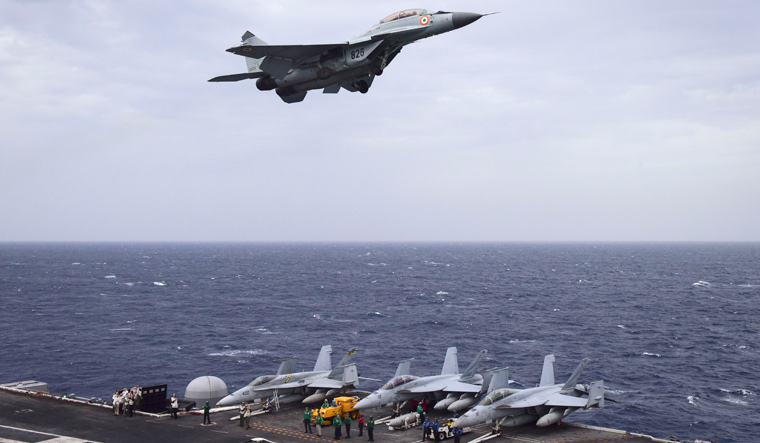The first 'two-plus-two' dialogue between India and the US will focus on closer military cooperation between the two nations.
However, the dates of the high-level dialogue, involving the foreign and defence ministers, from the two countries are yet to be confirmed due to uncertainty over the confirmation of Mike Pompeo as President Donald Trump’s new secretary of state. Two weeks ago, Trump's government decided to replace Rex Tillerson with Pompeo. The two-plus-two dialogue was planned to be held in April.
The decision to hold the two-plus-two dialogue was taken during a meeting of Prime Minister Narendra Modi and President Trump at the White House last year.
The crucial dialogue between the defence and foreign ministers of India and the US will be taking place at a time when relations between New Delhi and Beijing are not considered to be on good terms, especially after the recent comments of Chinese President Xi Jinping, when he vowed to protect “every inch” of China’s territory.
The Indian establishment is taking Jinping's comments seriously in the backdrop of last year's events, when the armies of India and China were engaged in a 73-day stand-off in the Doklam, a tri-junction between India, Bhutan and China.
South Block, which houses the defence ministry, is working on some agreements that are expected to be finalised during the dialogue. First, the armed forces of India and the US are working on a bilateral amphibious exercise, engaging all three services (army, navy and air force) in the near future. India only does such military exercises, involving all three wings of the armed forces, with Russia.
Second, after LEMOA, two other 'foundational' agreements—the Basic Exchange and Cooperation Agreement (BECA) and the Communications Compatibility and Security Agreement (COMCASA)—which have been pending for long due to their "intrusive'' element, are also likely to be on the table for further discussion. In 2016, India signed the Logistics Exchange Memorandum of Agreement (LEMOA) with the US, which allows the two nations' armed forces to work closely and use each other’s bases for repair and replenishment of supplies.
The two countries are working to set up a joint defence innovation centre, in which researchers and developers will work together to fulfil military needs of both nations. And in order to give a push to 'Make in India', both countries are expected to sign an Industrial Security Agreement, for co-production of aircraft, warships and other military hardware that will also include the transfer of technology. Intellectual property rights (IPR) issues will be covered in the agreement.
Moreover, for 'white shipping', both countries will work together to cooperate on maritime domain awareness, for sharing intelligence and other operational details.
And to further boost ties between the two navies, New Delhi will send a defence attaché (a senior armed forces officer) to the US Central Command headquarters in Bahrain, considered to be a strategic move.
Besides, both countries are working on a project to be part of a Southeast Asian Humanitarian Assistance and Disaster Relief (HADR) hub to respond to natural disturbances like tsunamis. 'Jointness' between India and the US in Southeast Asia will somehow contain the growing influence of China in the area.


